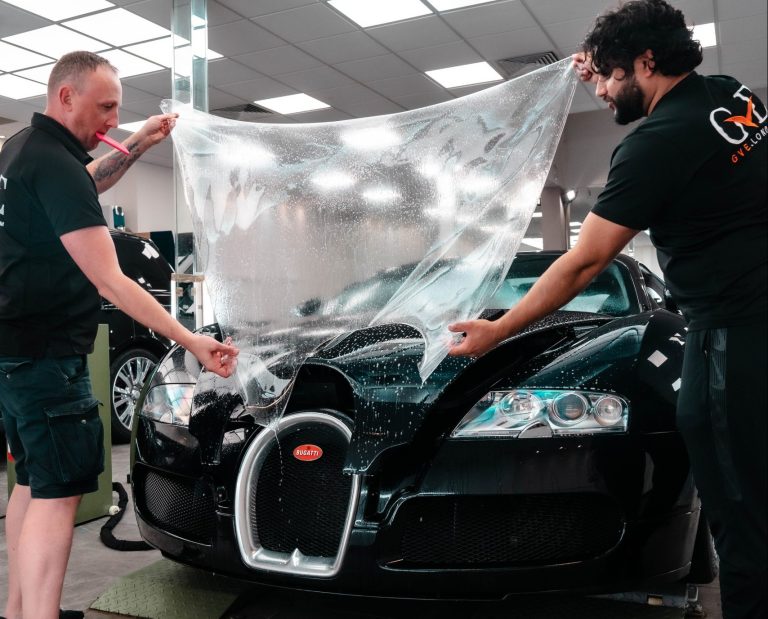- Showroom Case Studies
Essential Checklist for Exporting Vehicles from the UK | GVE London – Blog
Exporting cars from the UK is simple with proper preparation. Follow this guide for legal, logistical, and documentation tips to ensure hassle-free shipping.
The UK has been a major exporter of automobiles for a long time so exporting cars from the UK isn’t a major challenge. However, it does require proper preparation, thorough documentation and keen attention towards the legal and logistical side of things. Whether you’re shipping a car to a new country for personal usage or selling it to an overseas buyer, following this checklist will ensure the entire process goes by little butter on hot bread.
Subtle Advice
Start early! Some documents, like the V5C logbook, can take weeks to process. Rushing this process often leads to mistakes and delays. The process of exporting and importing vehicles from the UK involves multiple steps, so thorough preparation is crucial. Also, double-check shipping company credentials. A good reputation often translates to fewer headaches. And while air freight sounds fancy, save it for emergencies unless you’re shipping a Bugatti.
1. Notify the DVLA
For permanent exports, complete the V5C logbook’s “Permanent Export” section and send it to the Driver and Vehicle Licensing Agency (DVLA). Keep the rest of the logbook for registration in the destination country. For temporary exports (under 12 months), carry the full logbook while travelling
2. Prepare Required Documents
Accurate documentation is crucial for customs clearance. Ensure you have:
- The V5C logbook
- Proof of ownership or a bill of sale
- Export declarations for countries outside the EU
- MOT and insurance certificates if required Some destinations may also request emission compliance certificates or other technical paperwork.
3. Service and Clean the Vehicle
A well-maintained car not only avoids mechanical issues during transit but also meets international biosecurity standards. Many countries, such as New Zealand, are extremely careful about foreign particles entering their country and messing up the environment. Your vehicle needs to be free from any dirt, pests or contaminants before entering.
Some countries are indeed a bit more lenient with it but it’s best to wash your car thoroughly, both inside and out and schedule a proper service. If you own a high-end car, only go to a mechanic that specialises in performance vehicles or a supercar showroom.
Read Also: Common Mistakes to Avoid When Exporting a Car from the UK
4. Choose the Shipping Method
There are three main options:
- Roll-On/Roll-Off (RoRo): The car is driven or rolled onto the ship and secured in a large, open space. Best for standard vehicles, but it lacks protection against the elements or theft.
- Container Shipping: Cars are placed in containers, providing greater security and protection from the environment. Ideal for most cars, including luxury ones, as it balances cost and safety.
- Air Freight: The fastest and most secure option, but also extremely costly. It’s used primarily for super luxury or hypercars, where time and safety are critical.
5. Understand Customs and Import Duties
Understand the customs regulations of your car’s destination country. Each country has its own set of rules when it comes to importing vehicles. For example, some may require modifications to meet local standards. Also, be prepared to pay import duties, which vary based on the value of the vehicle and the country.
6. Insurance and Safety
The thing with standard insurance policies is that they hardly ever cover international shipping. And sending a car across the ocean on a giant metal container is arguably an affair that could lead to some damage here and there. So, before your vehicle incurs any damages during transit, get your car insurance for international shipping. Freight companies offer several plans, but you could absolutely opt for independent insurance plans as well.
Insurance must not be avoided for high-end vehicles, as damages to those can be hefty. Make sure that your insurance covers the vehicle both in the UK and outside.
Conclusion
Exporting a vehicle from the UK, if you’ve got everything stated on the above list covered, is quite an easy process. No matter if you’re exporting a standard car or a high-performance supercar, attention to every detail ensures your vehicle reaches its destination hassle-free. For assistance with exporting cars from the UK, visit GVE London, a supercar showroom located in West London that deals with exports, buying and selling of supercar and luxury cars, repairs, servicing, modifications, and all things automotive.
Frequently Asked Questions
To be on the safer side of things, it’s best to start the process at least 6-8 weeks prior as procuring documents can often take some time and it is tough to expedite that process.
Most vehicles are eligible for export as long as they meet the required standards in the destination country. For example, some countries may have strict emission standards or regulations regarding safety features. Before proceeding, check with your destination country’s customs or vehicle import authority to ensure your vehicle complies with their rule.s
Many reputable shipping companies provide tracking services. Once your vehicle is loaded onto the ship, you should receive tracking information and regular updates on the shipping progress. Container shipping often offers the best tracking options, with more detailed and frequent updates.
Contact Us
"*" indicates required fields
OUR SERVICES

PAINT PROTECTION FILM

WRAPPING

SERVICING









